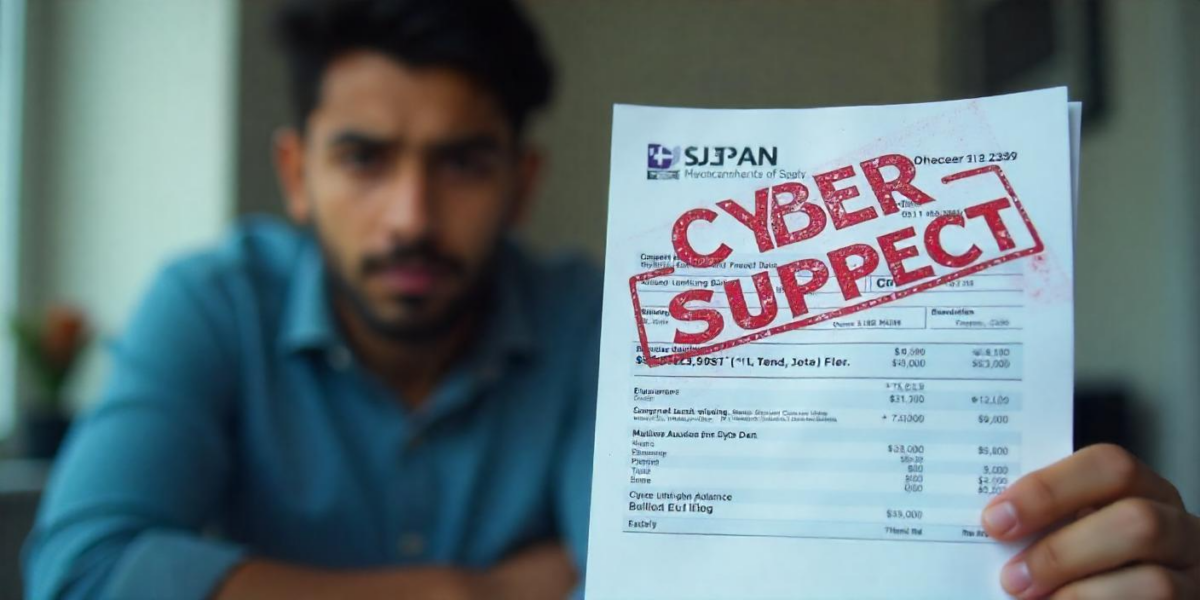How often do you check your bank account balance?
For most of us, it’s a quick check to see if our salary has been credited or to plan a weekend getaway and check our budget.
Now what if, when you open your banking app with an expectation to see a familiar number, but instead, your screen flashes red?
Negative balance, Account flagged, Transactions restricted, or you find an unexpected bank balance in India.
Your stomach drops. You didn’t authorize any unusual payments. You didn’t share your details with anyone. But none of that matters now. You’re trapped in something much bigger—a web of cybercrime where your name is just another entry in a long list of “suspects.”
This is something that happened with Kiran Naik, a Mysuru resident. He holds an account at the State Bank of India (SBI), Yadavagiri Branch. On Mar 25, his salary of Rs. 20,000 was credited to his account. But after a few transactions, he found a negative balance in his account.
What happened next will shock you.
Remember, the case ahead isn’t about Kiran Naik. It is the real lesson that would help you to prepare for the same.
It could be about you, your sibling, your parents, or your best friend. Because in today’s digital age, cybercriminals don’t just target the reckless.
They exploit the careful, the responsible, the everyday people who trust the system until the system turns against them.
A Routine Transaction Turns into a Nightmare
It started like any other payday. Kiran, a software professional in Mysuru, received his salary, ₹20,000, credited to his State Bank of India (SBI) account.
While in Bengaluru for work, he withdrew some cash, swiped his card for a small petrol purchase, and carried on with his day.
Later that evening, as he lazily scrolled through his banking app, he nearly dropped his phone. His account balance wasn’t just low, it was negative. A glaring (-₹9,772) flashed on his screen.
Kiran sat up straight. That’s impossible! He quickly refreshed the app, hoping it was some glitch. No luck.
Heart pounding, he called customer care.
“Sir, your account is showing a negative balance because of a recent transaction.”
“But I didn’t make any big transactions,” he argued. “Just an ATM withdrawal and a petrol payment!”
“Sir, you need to visit your home branch for further clarification.”
Kiran felt a chill down his spine. Something was wrong.
The Bank’s Confusing Response
The next morning, Kiran stormed into his bank branch in Mysuru. The manager, a middle-aged man with a perpetually tired expression, looked up as Kiran approached his desk.
“Sir, my account balance is in the negative! I only made two small transactions, but my money is gone. What’s happening?”
The manager exhaled loudly and exchanged glances with his colleague. “You’re not the only one. A few other customers have reported similar issues.”
Kiran blinked. “Then what’s going on?”
The manager clicked around on his system, frowning. Then, something shifted in his expression. He leaned forward.
“Mr. Naik… your account has been flagged as a suspect in a cybercrime investigation.”
Kiran’s jaw dropped. “What? That’s absurd! I haven’t done anything illegal!”
The manager sighed. “Your account has been classified as a ‘Layer-3 suspect’ in a cybercrime case registered in Jaipur.”
“Layer-3 suspect? What does that even mean?” Kiran’s voice rose.
“It means your account was used in a chain of fraudulent transactions. Maybe not by you directly, but by someone who transferred money through your account.”
Kiran felt a sinking feeling. His bank account, his financial backbone, was now a liability.
A Frustrating Search for Answers
Kiran tried to test his account by depositing a small amount. First, ₹1. Then ₹20. Neither showed up. Instead, they vanished into some unknown void.
Panicking, he asked the bank to close his account to prevent further losses. But the bank officials shook their heads.
“We can’t close your account until we receive clearance from the cybercrime division.”
“So what am I supposed to do?” Kiran demanded. “Just sit and wait while my money disappears?”
“I’m afraid so.”
Kiran clenched his fists. His head throbbed with frustration. He wasn’t just dealing with missing money, he was now tangled in a full-fledged cybercrime investigation.
A Bigger Problem Than Just One Account
It wasn’t just Kiran. His cousin, Ravikumar, who banked at another SBI branch, faced the same issue. His account, too, had mysteriously gone negative by ₹7,500.
Kiran started digging deeper. He learned that cybercriminals often exploit innocent people’s bank accounts by rerouting stolen money through multiple layers, making it harder for law enforcement to trace the origins.
His account, without his knowledge, was part of this money-laundering web.
And now, he was paying the price.
The Lessons We Must Learn
Kiran’s case is a wake-up call for all of us. Here’s what we can do to protect ourselves from such financial nightmares:
- Monitor Your Transactions Regularly – Always check your bank statements and transaction history.
- Secure Your Banking Credentials – Never share your PIN, OTPs, or banking details.
- Be Wary of Unusual Deposits or Transfers – If an unknown amount is credited to your account, report it immediately.
- Enable Account Alerts – Set up SMS and email notifications for every transaction.
- Report Bank Frauds in India – It is always better to report any suspicious activity, irrespective of the amount. Register with us now and get complete assistance in such cases.
Final Thoughts
Kiran is still waiting for a resolution. His savings are stuck, his financial stability shaken, and his name entangled in an investigation he had nothing to do with.
But his story serves as a lesson: in an age where cybercrime is evolving faster than security measures, vigilance is our best defense.
As you read this, take a moment to check your own bank statements. Because, like Kiran, you might be one bad transaction away from a financial nightmare.







